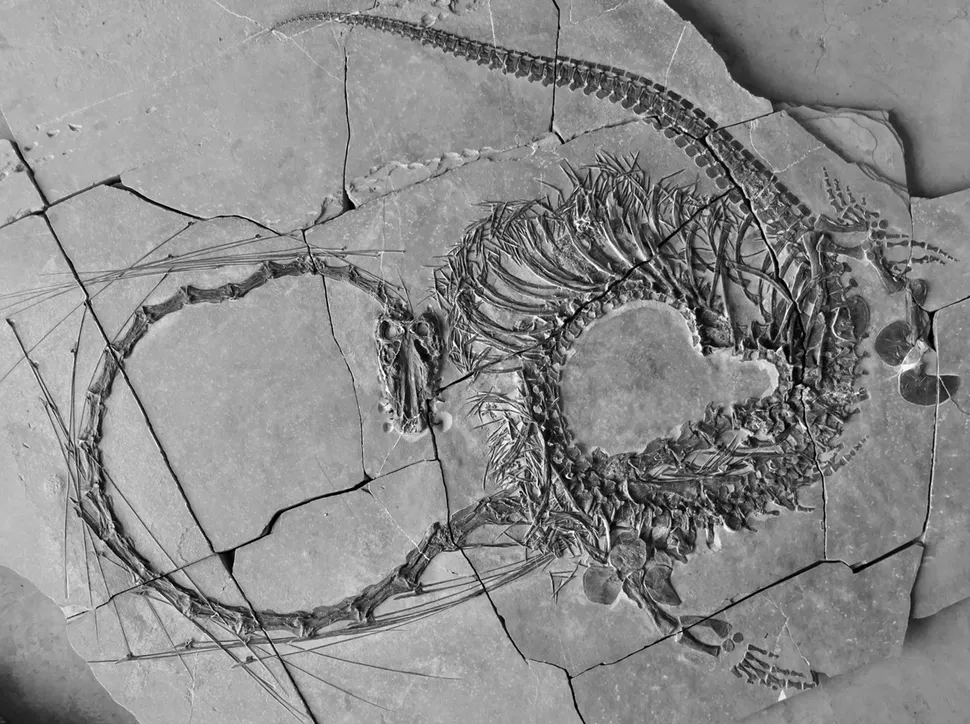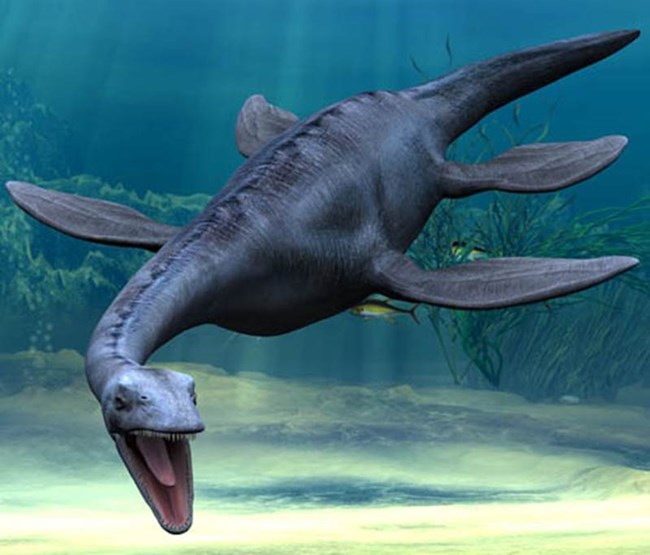The website livescience.com recently published an article about the discovery of a fossil of a dragon-like creature from the Triassic period.
This 240-million-year-old creature has been nicknamed the “Chinese Dragon” because it resembles the descriptions of this mythical creature.

This long-necked predator belongs to the species Dinocephalosaurus Orientalis, which roamed the shallow waters of the Triassic period.
With a neck nearly 7.7 feet (2.3 meters) long and containing up to 32 vertebrae, which could move flexibly like a snake, this creature became a master of ambush. Dinocephalosaurus Orientalis could silently stalk and approach its prey, and then suddenly attack.
Discovered in 2003, scientists have meticulously pieced together the fossil remains to reconstruct this entire inspiring predator. This 16.8-foot-long carnivore promises to reveal valuable insights into Triassic marine life.
Beyond myth:
In addition to being compared to the dragon in Asian mythology, Dinocephaloosaurus Orientalis is also reminiscent of the Loch Ness Monster. However, this creature is not closely related to the Plesiosaur. It represents a separate branch of marine reptiles.

Unlocking the secrets of the past, this remarkable discovery opens the door for further research. Scientists hope to learn more about the evolution of this group and the fascinating function of the elongated neck in this ancient predator.
What do you think about this event?
Will the discovery of the Dinocephalosaurus Orientalis fossil contribute to the possibility that ancient people in Asia discovered similar fossils and formed the legend of dragons based on them?
The long neck and snake-like shape of Dinocephalosaurus Orientalis certainly resembles the traditional image of a dragon.
To me, the discovery of the Dinocephalosaurus Orientalis fossil is perhaps a reminder that the legends and myths of our ancestors may be based on real events or creatures that have happened or lived vividly on Earth.
And who knows, somewhere out there, under the mysterious deep sea, there may still be such creatures silently observing their prey, regardless of the bustling life of humans on the surface.
